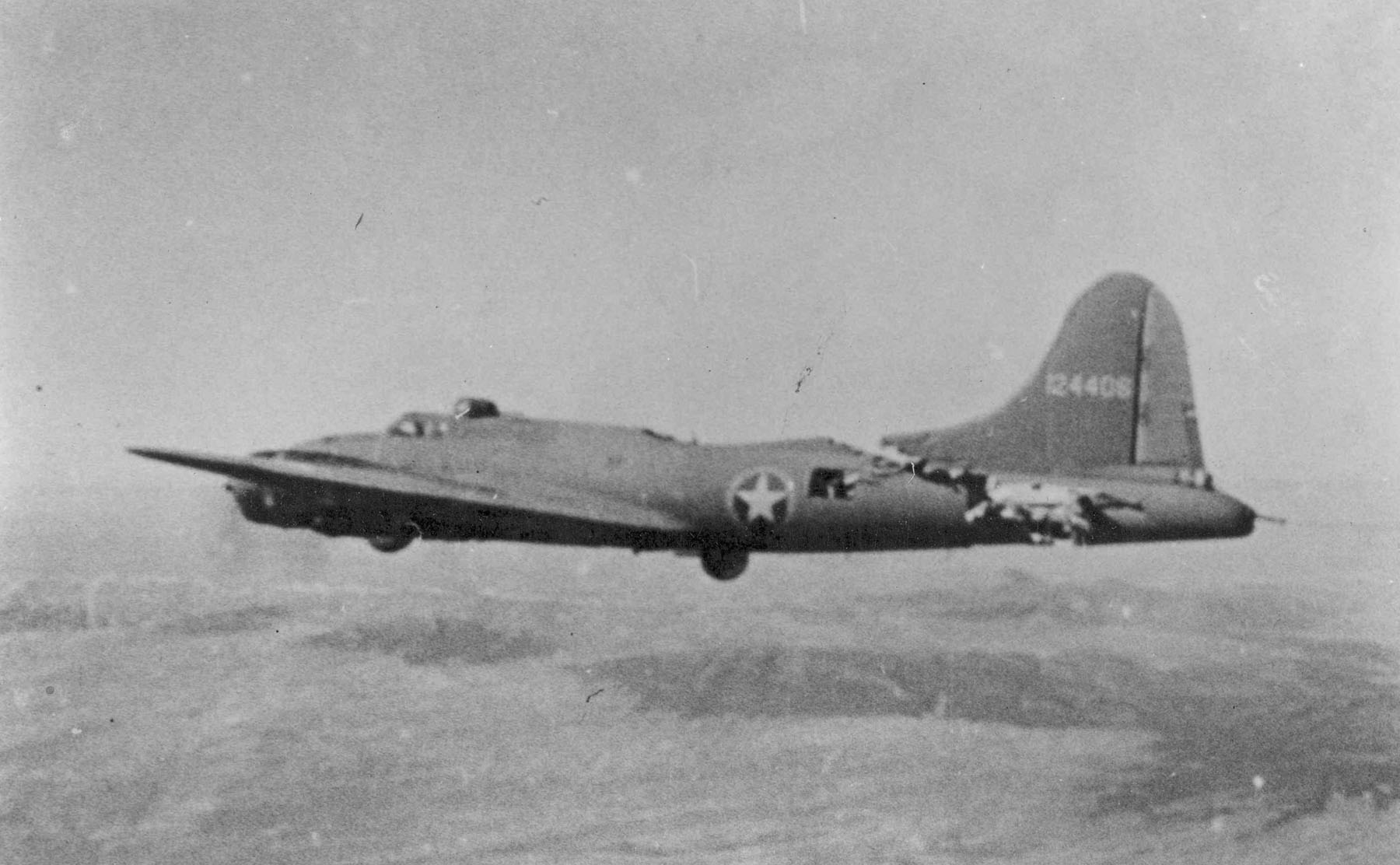
1 February 1943: During World War II, the 414th Bombardment Squadron (Heavy), 97th Bombardment Group (Heavy), 12th Air Force, U.S. Army Air Forces, was on a mission to attack the docks at the port of Tunis in order to cut the supply chain to the German and Italian armies operating in Tunisia.
A single-engine Messerschmitt Bf 109G fighter defending the city collided with All American III, a Boeing B-17F-5-BO Flying Fortress, serial number 41-24406, which was under the command of Lieutenant Kendrick R. Bragg, Jr., U.S. Army Air Corps. The fighter cut diagonally through the bomber’s fuselage, carried away the left horizontal stabilizer and elevator, and damaged the flight control cables.
The rugged design and construction that made the Flying Fortress a legend allowed the airplane to fly another 90 minutes to its home base at Biskra Airfield, Algeria. Lieutenant Bragg made a careful landing, holding the tail off the runway as long as possible. None of the ten men aboard were injured.
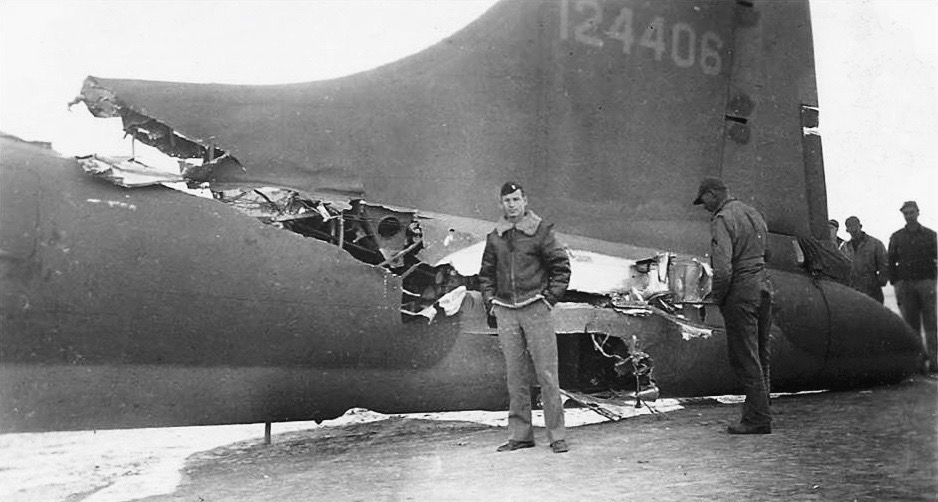
All American III was repaired and was returned to service. It was reassigned to the 352nd Bombardment Squadron (Heavy), 301st Bombardment Group (Heavy) at St. Donat, Tunisia, and flew till nearly the end of the war. It was dismantled for salvage at Lucera Airfield, Italy, 6 March 1945.
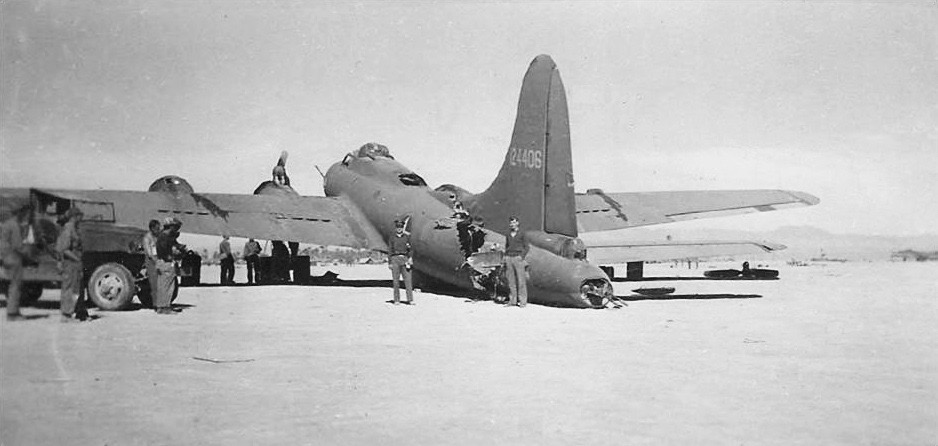
41-24406 was assigned to the 92nd Bombardment Group at Bangor, Maine, 13 July 1942. It was flown across the Atlantic Ocean to RAF Polebrook, and reassigned to the 414th. The B-17 arrived at Maison Blanche, Algeria, 13 November 1942. It then traveled to Tafaroufi, Algeria, and then to Biskra, arriving there on Christmas Day.
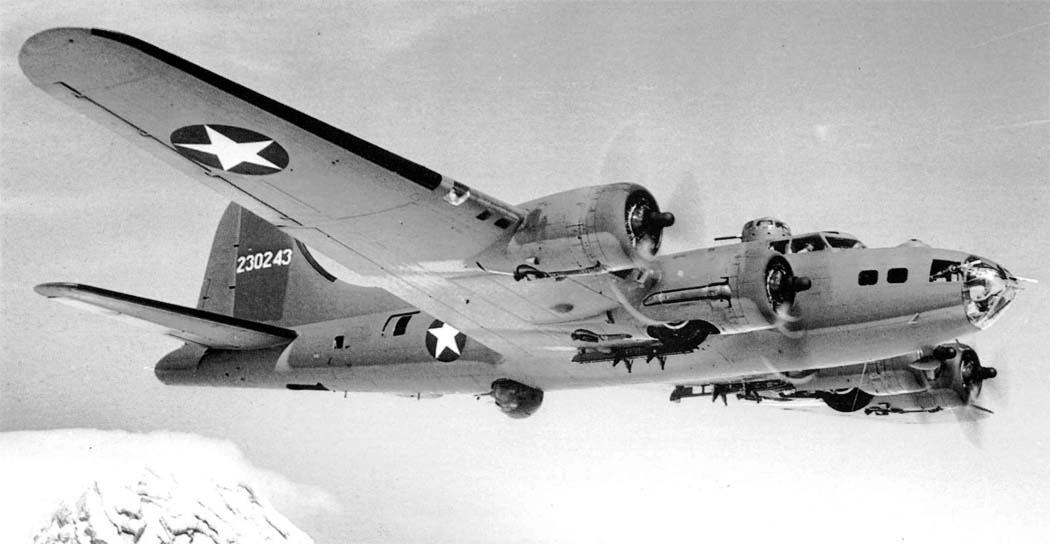

The B-17F had an approximate empty weight of 36,135 pounds (16,391 kilograms), 40,437 pounds (18,342 kilograms) basic, and the maximum takeoff weight was 65,000 pounds (29,484 kilograms).
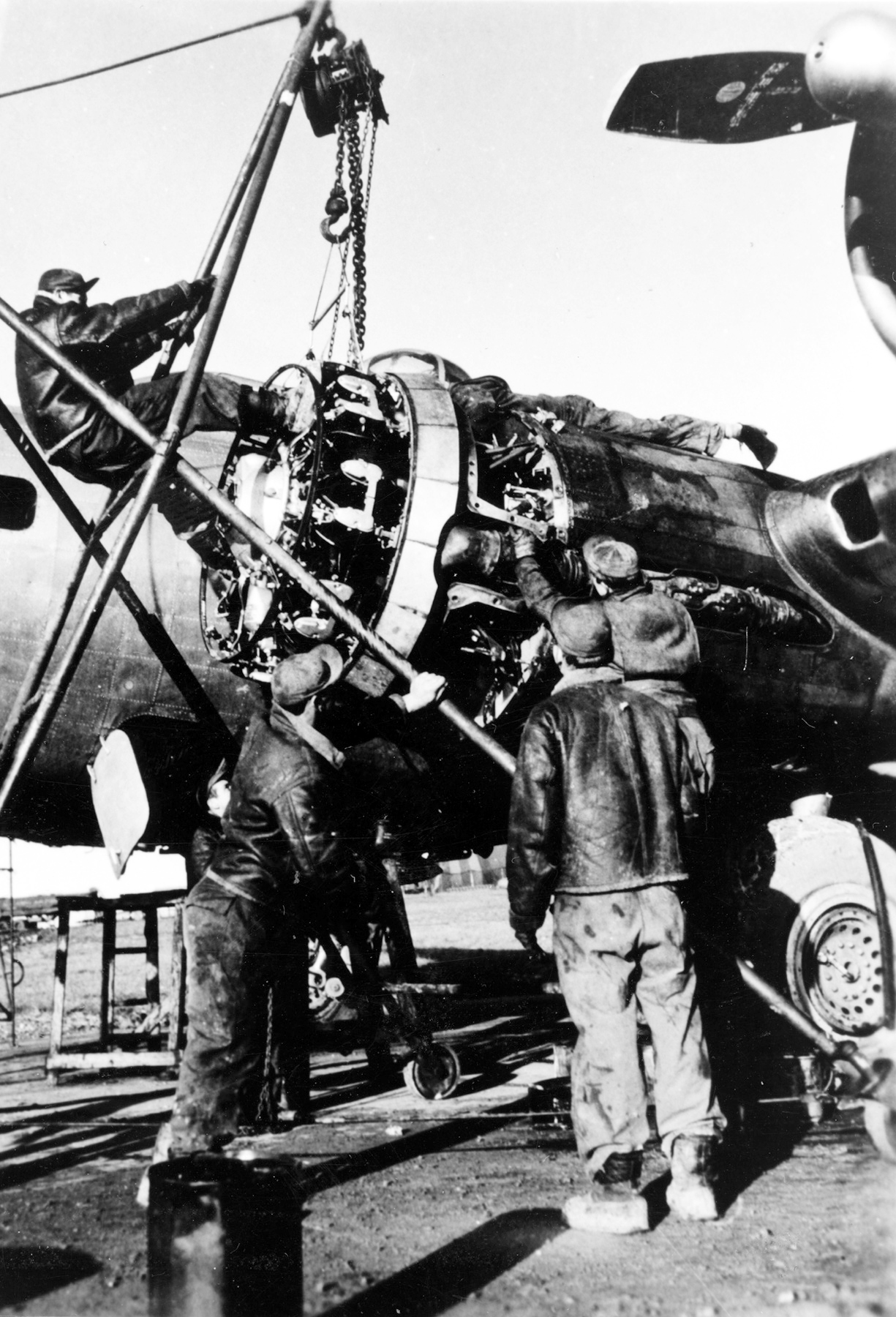

The B-17F had a cruising speed of 200 miles per hour (322 kilometers per hour). The maximum speed was 299 miles per hour (481 kilometers per hour) at 25,000 feet (7,620 meters), though with War Emergency Power, the bomber could reach 325 miles per hour (523 kilometers per hour) at 25,000 feet for short periods. The service ceiling was 37,500 feet (11,430 meters).
With a normal fuel load of 1,725 gallons (6,530 liters) the B-17F had a maximum range of 3,070 miles (4,941 kilometers). Two “Tokyo tanks” could be installed in the bomb bay, increasing capacity by 820 gallons (3,104 liters). Carrying a 6,000 pound (2,722 kilogram) bomb load, the range was 1,300 miles (2,092 kilometers).
The B-17F Flying Fortress was armed with up to 13 Browning AN-M2 .50-caliber machine guns. Power turrets mounting two guns each were located at the dorsal and ventral positions.
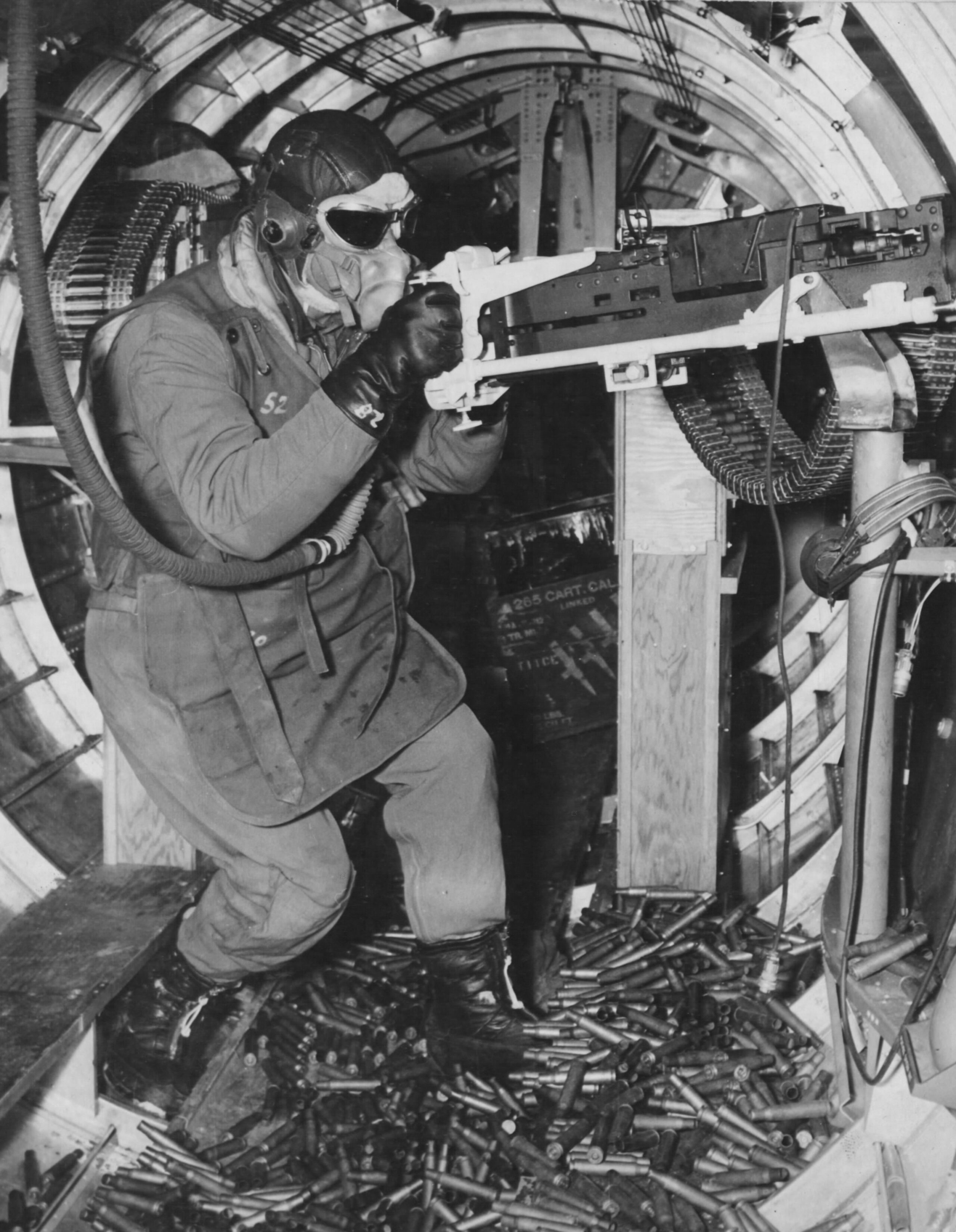
The maximum bomb load was 20,800 pounds (9,435 kilograms) over very short ranges. Normally, 4,000–6,000 pounds (1,815–2,722 kilograms) of bombs were carried. The internal bomb bay could be loaded with a maximum of eight 1,600 pound (725.75 kilogram) bombs. Two external bomb racks mounted under the wings between the fuselage and the inboard engines could carry one 4,000 pound (1,814.4 kilogram) bomb, each, though this option was rarely used.
The B-17 Flying Fortress first flew in 1935, and was in production from 1937 to 1945. 12,731 B-17s were built by Boeing, Douglas Aircraft Company and Lockheed-Vega. (The manufacturer codes -BO, -DL and -VE follows the Block Number in each airplane’s type designation.) 3,405 of the total were B-17Fs, with 2,000 built by Boeing, 605 by Douglas and 500 by Lockheed-Vega.
Only three B-17F Flying Fortresses remain in existence.
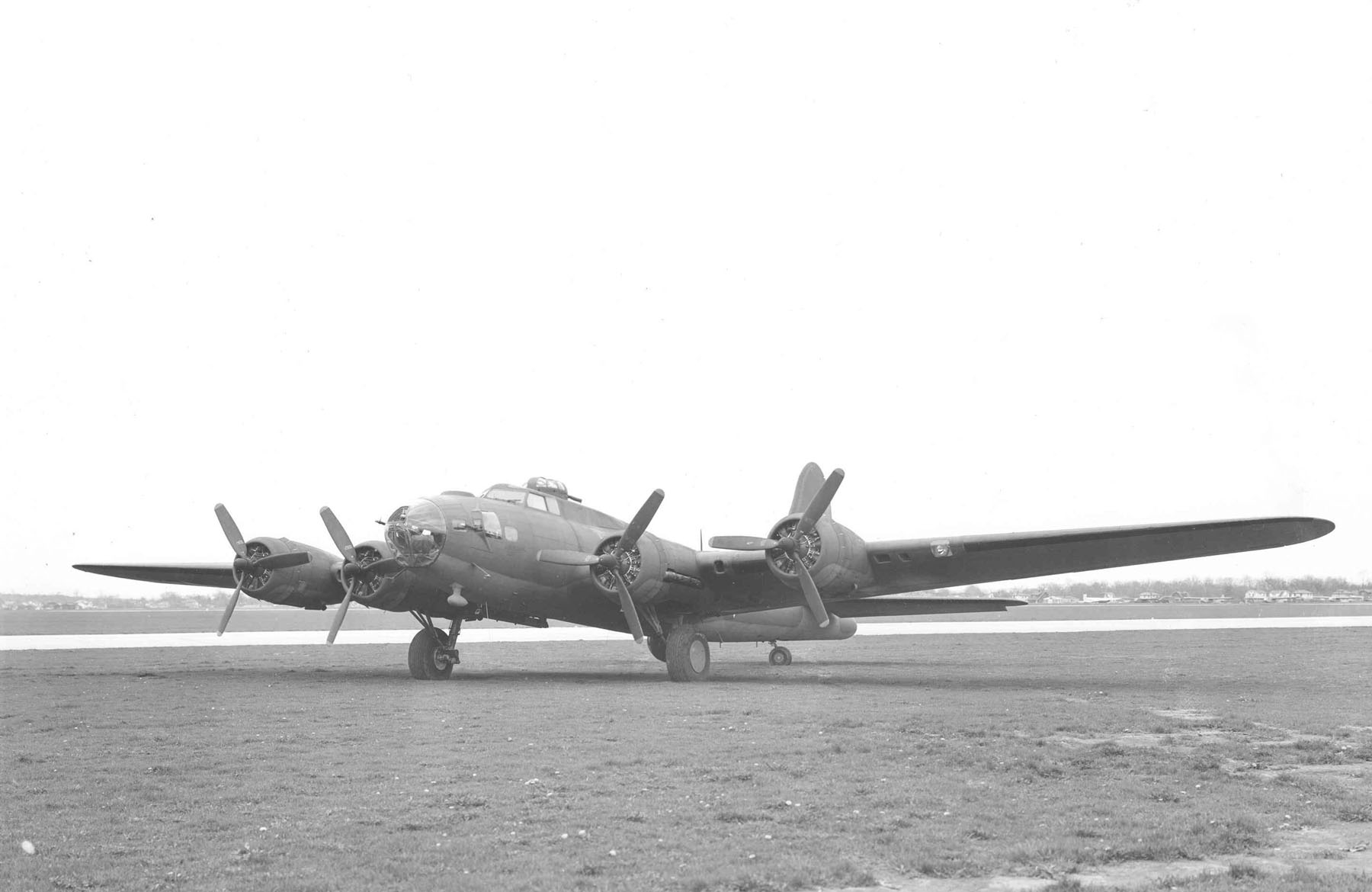
¹ Later production B-17F and B-17G bombers were equipped with Wright Cyclone C9GC (R-1820-97) engines.
© 2019, Bryan R. Swopes
Among the amazing things in this story – the damage done not preventing their continuing the bomb run, returning to base despite the damage – it seems incredible that apparently no medals were awarded for this mission. Lt Kendrick Bragg, near as I could tell, received a DFC, but that was more for his war service than this mission (I have been unable to find his citation). This mission also served as the inspiration for the song “On a Wing and a Prayer.”
you should watch the yarnhub story on youtube also their channel has other war storys the newer ones have better animations.
I have read elsewhere that AA2 was indeed repaired, but unsurprisingly the flying characteristics were less than optimal, and she was used as a field hack until being scrapped. Apparently you can’t just bolt on a salvaged after fuselage and expect it to fly like new 🙂
It was a common enough repair, but I suspect it would need to be done with some precision. Looking at those North African airfields of the period, I doubt the facilities were as well-equipped as they would be on one of the air bases in England.
Did the Bf 109G land successfully?
I don’t know. The fighter pilot would have been lucky to survive the collision.
it decintegrated on impact also watch the new yarnhub story on this on youtube
No. The Pilot was very probably Erich Paczia from Jg53. There is an article in a french magazine (Batailles Aeriennes) about the Luftwaffe in Tunisia and their then-new tactics of attacking B-17s head-on. One of these machines was All American on Feb 1, and date and circumstances of Paczias death matches.
from Wikipedia:
Several false myths accrued in the lore of the All American,[8] some of which were refuted in a 2012 interview of her bombardier Ralph Burbridge.[5] Burbridge explained that the aircraft returned to her base in North Africa, and could not have made a long trip back to England as widely recounted.[5] The base near Biskra, Algeria, was a more reasonable 300 miles from the bombing target.[8]
Burbridge also said that the collision occurred when the bomber group was returning to base after having dropped its bombs on target, so that the aircraft did not complete a bombing run after being damaged as had been incorrectly recounted.[5] Burbridge’s account confirms that the ten crew members donned their parachutes, contradicting stories that the crew sacrificed some of their parachutes to hold the plane together or for an in-flight rescue of crew members from the isolated tail section.[5]
The Harold Adamson and Jimmy McHugh 1943 song “Comin’ In on a Wing and a Prayer” was not written about All American as sometimes reported, but was about another 97th Bomb Group B-17, Thunderbird.[8]
That waist gunner looked very busy that day.
750–850 rounds per minute.
hey everybody watch the new yarnhub story on this it is on youtube also they have other war storys.